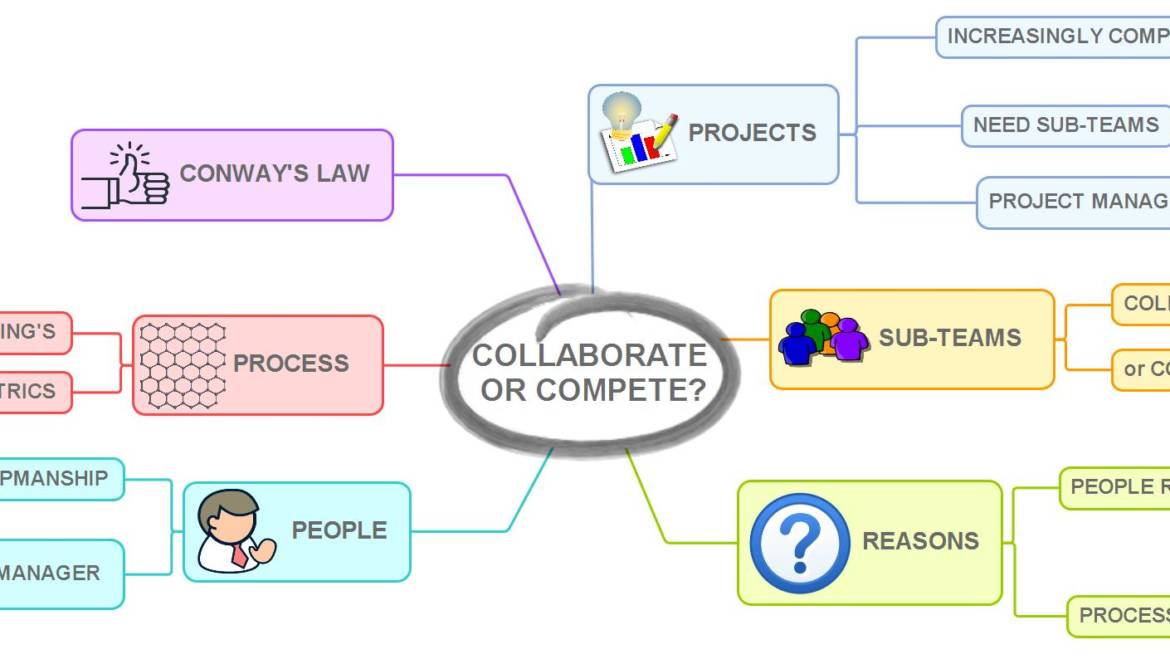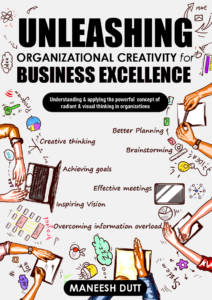With increasing complexity of projects, it is common to see project sub-teams (headed by a team leader), relatively independent but still, working towards the creation of a common product or service. The project manager, as always, must play the role of integrating the teams. It is obvious that in the interest of the final deliverable that all sub-teams must collaborate and not compete. Hence to compete or collaborate is not a question at all but strangely the ground reality may be different. Unknowingly, subtle actions, behaviours and even processes may actually be encouraging the sub-teams to compete (beyond the prescribed so to say “healthy limit”) and causing damage to the project. In my personal experience the reasons for this unhealthy competition can be divided into two buckets “People” and “Processes”:
A) PEOPLE: Some possible triggers related to people which could hamper collaboration between teams:
– One Upmanship: If one of the sub-teams perceives itself to be superior to other teams (basis their work or experience) their actions would also speak for them. The “superior team” employees, so to say, may usually be the last to arrive for a meeting, the last to submit their progress report etc. etc. These small actions send the wrong signals to the other teams and potentially reduce the willingness to collaborate.
– Hiding our shortcomings: This is quiet the opposite of the previous situation. A team realizes that they are not technically sound and instead of asking for help they do everything to hide this. They will confuse situations, start a blame game, focus more on what the other teams are not doing etc etc.. Their actions trigger an unhealthy competing environment rather than a collaborative one.
– Biased Project Manager: The Project manager, being an integrator, needs to be surgically correct in identifying and accepting the uniqueness of each of the teams/project leaders. However, I have observed that many a project manager are unduly kind to one team/leader and strongly against another. The reasons for this could be many, the prior work history of the project manager, closeness of the project manager to one of the team leaders etc. Whatever be the reason the consequent actions of the project manager would do more harm than good in creating a collaborative environment.
B) PROCESSES: Simply put a process is nothing but a tool to create healthy habits inside an organisation. Having said that, the project manager needs to be attentive that the processes being followed are not unconsciously hindering collaboration:
– Review Meetings: Is there a standard process being followed in the review meetings applicable to all the teams? Are there any teams regularly excused from attending or reporting in the meeting? Are only achievements applauded in the meeting? Does the project managers behaviour during the meeting help instil a collaborative environment? Some of these questions when answered sincerely would help understand what subtle messages are being hard coded in the team environment.
– Progress Metrics: As indicated earlier each of the sub-teams are unique hence the project progress metrics to be reported periodically may or may not be the same for each of the team. This should be duly recognised by the project manager to ensure that each team is focused on the most relevant metric for their respective deliverable. Same metric being applied just to ensure a uniformity of reporting may actually be painting the wrong picture of the teams and the project progress.
Finally in context of the project environment it is also important to reminds us of Conway’s law, which is an adage named after computer programmer Melvin Conway, who introduced the idea in 1967. It states that:
“Organizations which design systems … are constrained to produce designs which are copies of the communication structures of these organizations.” (source: Wikipedia)
Whether we accept it or not the final product will reflect the internal working or thought process of the organisation comprising the various entities. Hence a collaborative environment with open communication channels across teams would go a long way helping to deliver successful projects and products.
In your experience have you noticed behaviours/actions amongst teams which create an unhealthy environment? Would love to hear from you in the comments below.
Finally if you are looking for more collaborative meetings, you could also check out my book “How to have Mind Blowing, Engaging & Energising Meetings”. The book is available on Amazon (paperback as well as ebook) and for those in India, for a limited time you can get a 30% discount by using the coupon code READER30 on my website shop by clicking here.
(Those interested in the mindmap above can download from Biggerplate.com by clicking here.)



